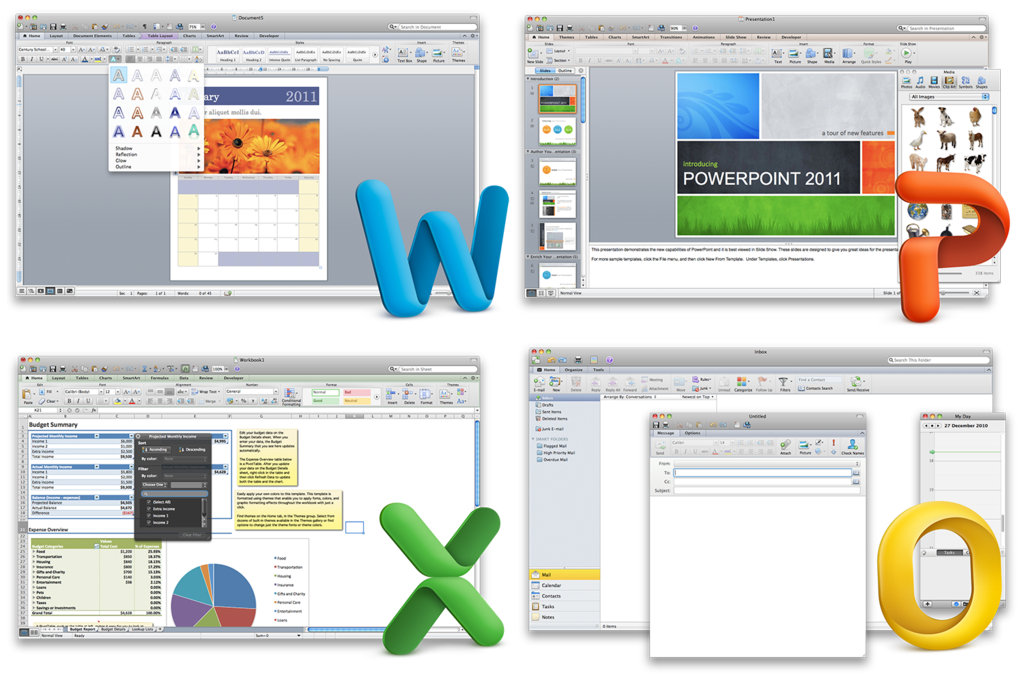For Office for Mac, you can have up to 25 licenses associated with the same Microsoft account: only one license for an Office 365 subscription and multiple one-time-use installs of Office for Mac Home and Student or Home and Business. If you have multiple Mac licenses associated with the same Microsoft account, it's best to start with an Office 365 subscription. A one-time-use license can not be deactivated. If you don’t have an Office 365 subscription, start by using the license at the top of the list and moving your way down.
- The Microsoft Office suite offers home users, students and businesses the tools they need to create documents and presentations, store and analyze data and handle email messages. MS Office applications are available in a variety of different packages designed to meet the needs of most users, and flexible licensing options give you control over your computer software purchases.
- Download and Install office for Mac and get started on your favourite Mac programs in minutes.
There isn't a way to track your one-time licenses so we recommend you keep a list as to which license is activated on which device. If you don’t remember which license was used, you'll have to go through a process of elimination to determine which ones you've used so far.
Looking for cheap MS Office 2011 for Mac? We offer Microsoft Office for Mac 2011 Home & Student at low cost with free shipping.
You must be signed in as an administrator on the mac or provide an administrator name and password to complete these steps. Remove Office for Mac applications. Open Finder Applications. Command +click to select all of the Office for Mac applications. Ctrl+click an application you selected and click Move to Trash. Remove files from your user Library folder To remove files from your user Library folder, you'll need to first set the Finder View options.
Ms Office Software For Mac

In Finder, press + Shift+h. On the Finder menu at the top, click View as List, and then click View Show View Options. In the View Options dialog box, select Show Library Folder and save. Back in Finder, open Library Containers and ctrl+click each of these folders and Move to Trash. Not all of these folders may be present.
com.microsoft.errorreporting. com.microsoft.Excel. com.microsoft.netlib.shipassertprocess. com.microsoft.Office365ServiceV2.
com.microsoft.Outlook. com.microsoft.Powerpoint. com.microsoft.RMS-XPCService. com.microsoft.Word. com.microsoft.onenote.mac.
Warning: Outlook data will be removed when you move the three folders listed in this step to Trash. You should back up these folders before you delete them.
Click the back arrow to go back to the Library folder and open Group Containers. Ctrl+click each of these folders if present, and Move to Trash. UBF8T346G9.ms. UBF8T346G9.Office.
UBF8T346G9.OfficeOsfWebHost Remove from dock and restart. If you put any of the Office applications in your dock, go to each one and ctrl + click Options Remove from Dock. Restart your Mac to complete the uninstall. Related Topics. All of your Office for Mac 2011 apps will continue to function.
However, you could expose yourself to serious and potentially harmful security risks. Upgrade to a newer version of Office so you can stay up to date with all the latest features, patches, and security updates. To uninstall Office for Mac 2011 move the applications to the Trash. Once you've removed everything, empty the Trash and restart your Mac to complete the process.
Before you remove Office for Mac 2011, quit all Office applications and make sure there's nothing in Trash that you want to keep. Leave Office applications closed while you go through this process.
Uninstall Office for Mac 2011.